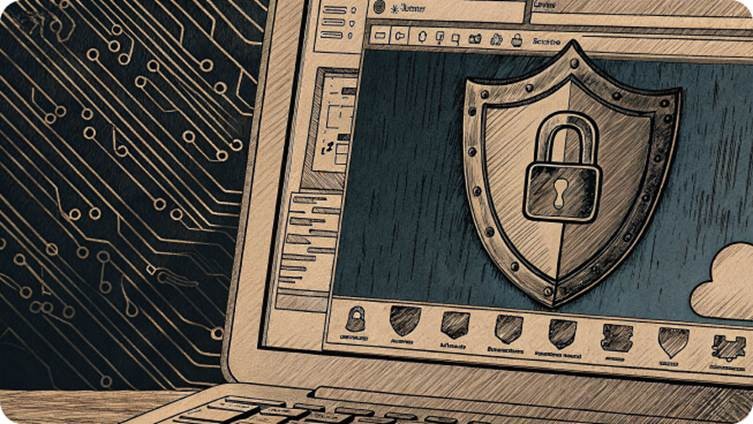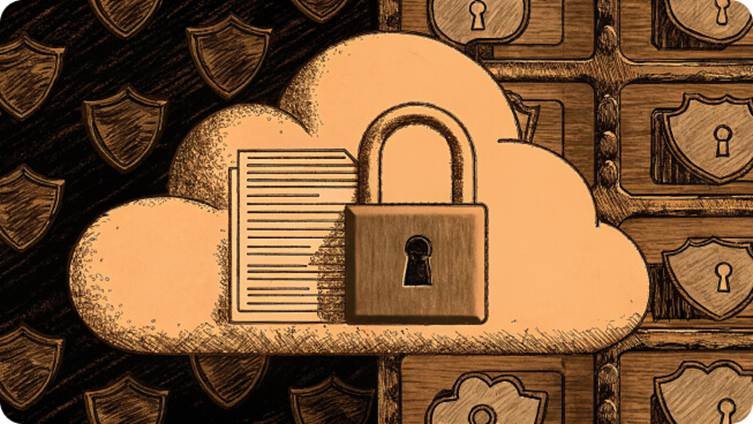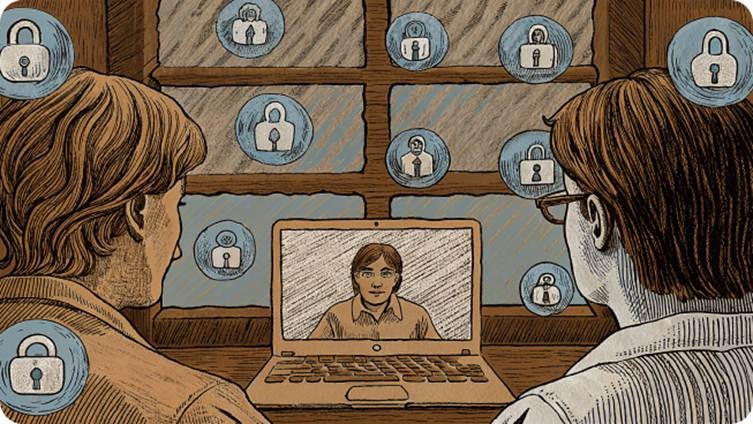Education has transitioned to a virtual format at a rapid pace. Students submit personal information—such as names, grades, and addresses—every time they enter a system. Such information is valuable but can also cause severe problems, such as identity theft or breaches of trust if exploited.
Prioritizing privacy entails treating student information like financial or healthcare records. It requires institutions, teachers, and platform providers to put stringent protection above convenience. This article presents step-by-step methods to safeguard student information. It provides guidelines on selecting platforms, educating personnel, and implementing a deletion policy, along with actionable checklists to ensure successful classroom privacy.
Know Your Data and Risk
Safe student data by knowing what you have and where leaks can appear. That includes:
● Personally identifiable information (names, dates of birth, addresses, telephone numbers)
● School records (grades, attendance reports)
● Digital communication (discussions, forums, comments)
● Multimedia (images, sounds, and video lessons)
● Sensitive details (health accommodations, learning support, or disciplinary records)
Risks differ in level. Weak or reused passwords create openings. Phishing messages trick people into giving out credentials. Oversharing URLs or files can inadvertently leak data. Third-party applications left unchecked, outmoded devices, and insecure networks provide further openings.

Map data flow at a glance: outline collectors, storage, use, and sharing—a high-level summary of where controls need reinforcement.
Core Privacy Principles
Once you understand your data, apply clear principles to inform your decisions. Such principles serve as a compass in deciding the safest bet regarding tools, requests, or practice.
Data minimization and purpose limitation
Accommodate only that which is needed. If a math test requires a first name, don't gather the full address or phone number. These limits reduce storage burden and impact.
Privacy by design and default
It will need to be secure out of the box, where privacy is inherent within any function. It will have a default preference to be cautious, such as turning off record or sharing files privately until a teacher alters it.
Least privilege and need-to-know
Remember that access should always be restricted. An administrator should be able to see student emails, but a teaching assistant should not. Utilize role-based access controls to ensure that each account receives only the necessary permissions for its designated role.
Transparency and consent
Children and parents must be aware of data use. Make explicit notices about what is collected, when it is collected, and how long we retain it. Obtain explicit permission before creating class records. It creates openness that helps build trust and avoids surprises.
Choose a Secure Platform
Selecting the correct online learning solution is one of the most significant privacy choices a school will ever make. The vendor must not only offer excellent features but also demonstrate a commitment to compliance.
Major safeguards are:
● Encryption of all data
● Multi-factor authentication for admins
● Single sign-on to avoid password fatigue.
Role-based access restricts users to what they require, and audit logs enable tracing back to identify who accessed files and when.

Admins must have control, too. The optimal platforms provide fine-grained permissions, secure classroom environments such as closed groups or time-limited links, and default settings that prioritize privacy.
For instance, Kwiga emphasizes its GDPR compliance and other security requirements, providing schools with the confidence they need when handling parents and auditors. Selecting suppliers who deliver such transparency reduces legal risk and simplifies privacy.
Lock Down Your Admin Setup
Even the safest platform can fail if it is not set up properly. Think of it like locking doors and windows—without it, intruders walk right in.
Strong authentication
Implement multifactor authentication for everyone, not just IT personnel, so that a cracked password is irrelevant. Recommend single sign-on via reputable school accounts to avoid being asked to repeat passwords, and never have administrators use the same account for both teaching and making high-level modifications.
Leave a few tightly secured “break-glass” accounts in reserve against emergencies. Implement automatic logouts after periods of inactivity, and never replace default login names and passwords, as attackers often know these.
Privacy-focused defaults
Set features to record only when required, default screen sharing to the host only, and class codes or meeting links to expire after a specified amount of time.
Lock Down Your Admin Setup
Your most powerful platform will be worthless if poorly implemented. It's like securing your door and windows—bypass it, and burglars stroll on in.
Authentication
Implement multifactor authentication across all personnel members, utilize single sign-on authenticated accounts, and distinct administrative accounts from student accounts.
Recovery and Access
Establish a secure emergency access point, utilize automatic session expiring techniques, and periodically rotate default user IDs and passwords.
Privacy Settings
Turn off recordings, limit screen sharing to the host only, and ensure class codes and links close on schedule.
Control Classroom Sharing and Communications
Digital classrooms are hazardous if sharing is not left broadly open. Teachers must master controlling what occurs within a lesson.
Safe links and access scopes
Employ invites or closed group links, not open URLs. Create expiration dates on shared links. Don't share access codes in open areas, such as public forums.
Video safety
Here is what you can do:
● Waiting rooms or lobbies: Permit teachers to authenticate who comes in.
● Host controls: Limit who can unmute, share screen, or chat.
● Recording rules: If recording is permitted, keep it locked down and restrict access to only those who need to view it. Consider watermarks to discourage leaks.
Messaging and comments
Turn on chat and forum moderation tools. Apply filters to block profanity or offensive content. Make reporting mechanisms clearly accessible to students who find they are being harassed.
Secure Devices and Networks
Not all risks reside on the site. A cracked computer or an open wireless network can expose student information, even if all software is up to date.
Device fundamentals
The beginning level of defense begins at the device level. Staying up-to-date helps keep current on security patches. Encryption of a full disk protects data if a laptop is lost or stolen, and a good antivirus or endpoint protection product provides an additional barrier.
Browser hygiene
Browsers become a standard doorway for attackers. It's a good practice to keep school work and personal use distinct and have different profiles. Restricting extension usage and frequently clearing cached data and cookies reduces further risks that might otherwise leak information or compromise privacy.
Network security
Even the strongest device can be hacked if the network is unprotected. Schools should use a WPA3-secured Wi-Fi or a WPA2. Remote-working employees require a VPN to keep confidential work material secure. Families also require advice: never use free public Wi-Fi while working on schoolwork until safeguards such as a VPN have been implemented.
Manage the Data Lifecycle
It comprises gathering and storing information in a protected manner, along with the duration of retention and final removal of information.
Collect only what is needed
Before creating a form or survey, ask: Is this field necessary? Fewer data points reduce risks. Always record consent for sensitive details.
Retention schedules
Establish retention dates for records. Store old classes and remove them when no longer relevant. Maintain secure backups that adhere to retention policies.
Rights of students and parents
Pupils or guardians can request access, have it corrected, or have it erased, depending on the location. Establish procedures to respond fast and accurately.
Secure disposal
Confirm that the deleted information is not recoverable. Use secure erasure software on computer files and shred written notes.
Train People
Technology alone cannot guarantee privacy. Staff, students, and parents must all be involved.
Training staff
Sessions should be regular and concise, seek out phishing identification, and create a culture where mistakes are identified early and not hidden.
Student awareness
Lower-level students should be taught about the importance of personalized, secure passwords. In contrast, upper-level students often require reminders to preview links, secure their devices, and refrain from posting class codes on social media.

Parents' involvement
Provide parents with brief guides and actionable recommendations on how to safely employ device technology at home, along with a clear contact point for addressing privacy concerns.
Monitor, Audit, and Improve
It's not a setup that can occur only once; it's a process.
Logs and alerts
Enable platform logging to identify who viewed what. Alerts will have to be raised about unusual activity, such as a login originating overseas.
Access reviews
Periodically review who still needs access. Remove accounts for staff who leave and alumni who graduate.
Privacy impact checks
When deploying a new integration or new tool, keep a quick little list in mind: What will it gather? How will it keep it? Do I require this?
Incident response
Develop a simple playbook:
- Recognize a problem.
- Contain the breach.
- Notify affected persons.
- Extract lessons from the occurrence to avoid recurrence.
Legal and Ethical Guardrails
Schools will nearly always be covered by a body of laws that protect privacy. Although specifics may differ, fundamentals remain the same.
● GDPR (Europe): Strong rights for data subjects, like access and erasure.
● FERPA (United States): Prevents unrestricted disclosures of educational records.
● COPPA (USA): It protects the computer data of minors below the age of 13.
Work with providers who comprehend these laws. Request concise Data Processing Agreements (DPAs). Don't forget: laws provide a minimum standard, and ethics should urge you to exceed this.
Conclusion
Putting privacy first is about trust. It's how students will learn better if they feel they will be protected; parents will push schools to protect their children's information. It's possible to make privacy a practice rather than a chore if schools adhere to clear principles, choose the right platform, secure devices against misuse, train staff and students, and remain vigilant at all times.





